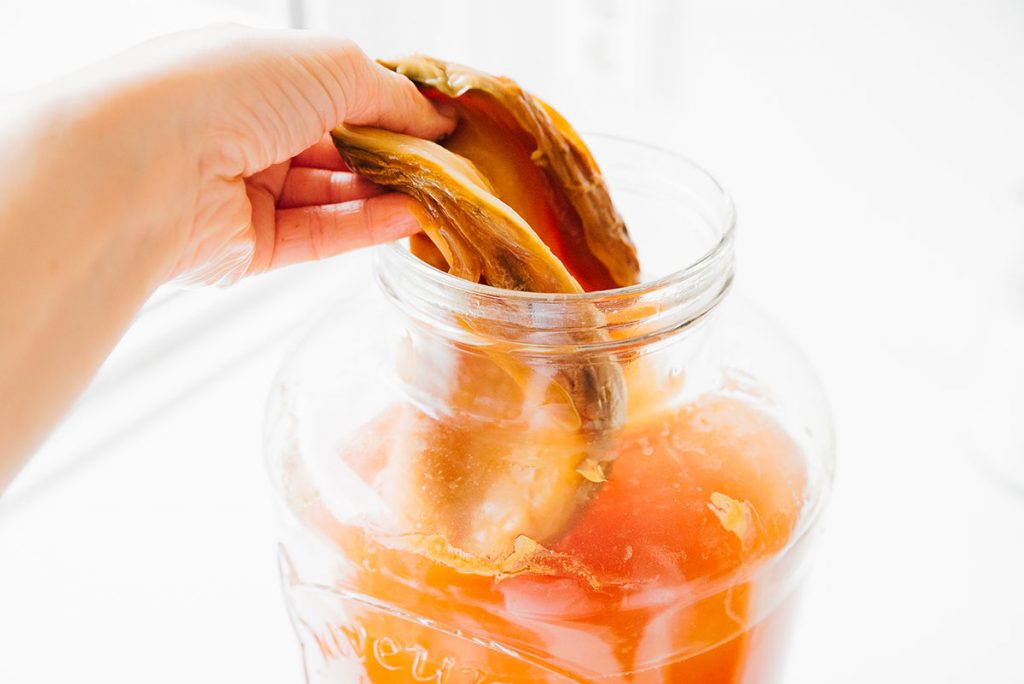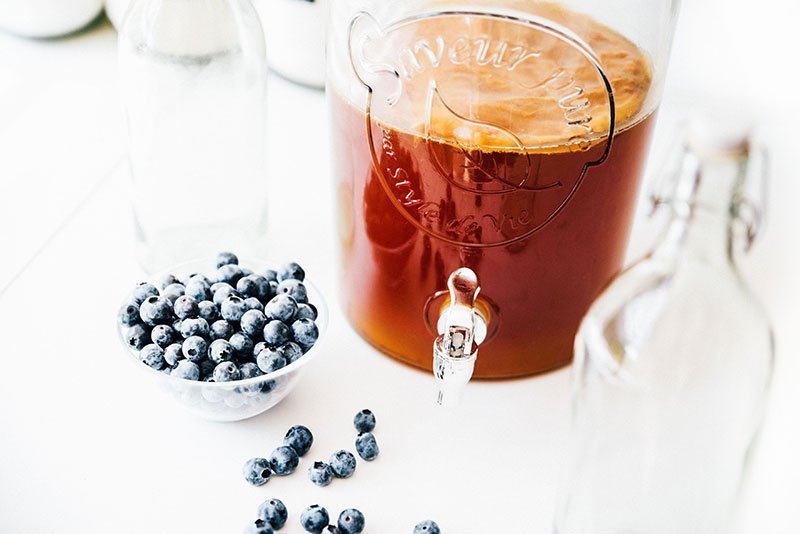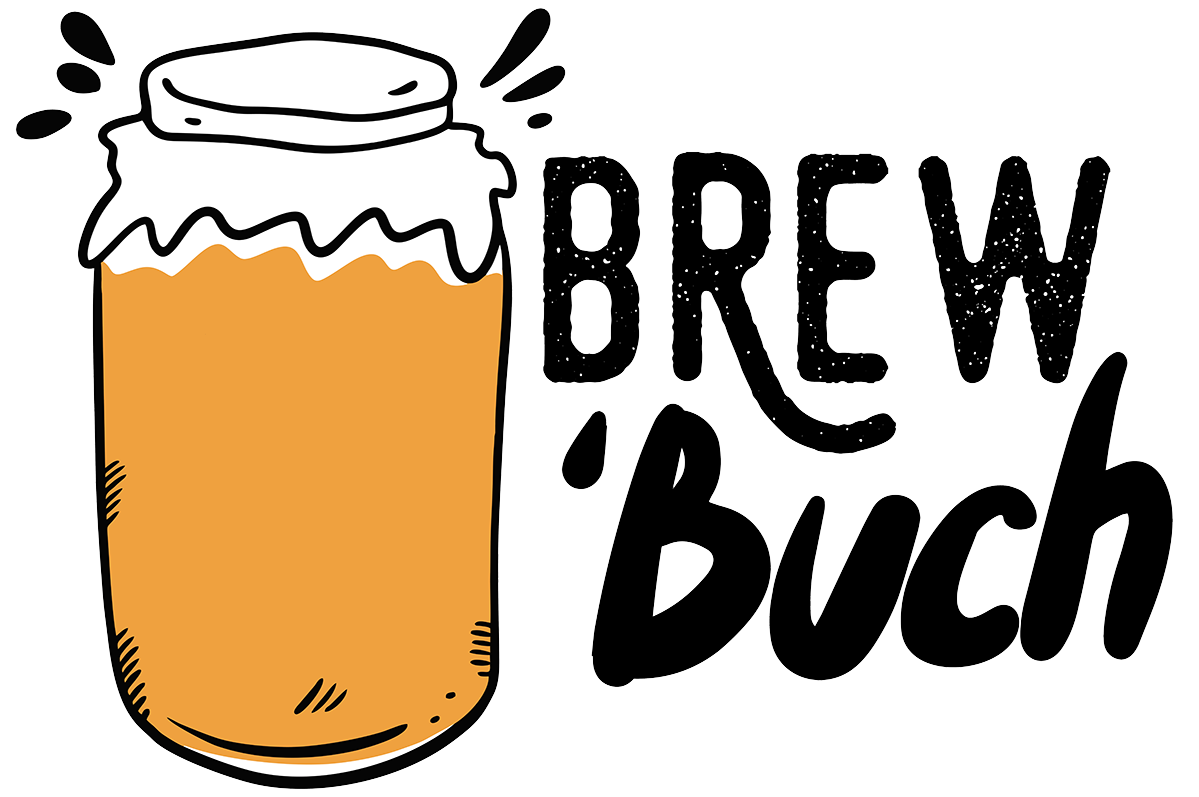The pellicle on top of kombucha that we call a SCOBY is synonymous with home brewing…but do you actually need a SCOBY to make kombucha? The answer may surprise you.

In virtually any homemade kombucha recipe on the web, you’ll find three essential ingredients: sweet tea, starter kombucha, and a SCOBY (a.k.a. pellicle).
But as I’ve fallen deeper into the world of home brewing (specifically on the subreddit /r/Kombucha/), I’ve come across a way of brewing that has blown my mind…brewing kombucha without a SCOBY.
While many redditors seem to successfully brew kombucha without a SCOBY, the collective internet still seems to think you need one as an integral part of the kombucha equation.
So do you actually need a SCOBY to make kombucha? The short answer: yea, sort of.

What is a SCOBY?
SCOBY is an acronym that stands for Symbiotic Culture Of Bacteria and Yeast.
While the pellicle on top of the kombucha has come to be known as a SCOBY, technically the starter tea is the SCOBY, and the pellicle is simply the pellicle. Are you confused yet?
But because 90% of people think that the pellicle is the SCOBY, that’s just what we call it to prevent further confusion!
The SCOBY/pellicle mainly consists of cellulose, a natural bi-product of the bacteria, along with some living bacteria and yeasts. But if most of the SCOBY/pellicle is simply cellulose, why do we need it for brewing kombucha? Can’t we just kickstart the fermentation with starter tea?

Putting scoby-less kombucha to the test
Driven by curiosity (and by the hundreds of Redditors who swear you don’t need a SCOBY/pellicle), I put my kombucha to the test.
I prepared two jars of sweet tea, adding starter tea (kombucha) to each. In one jar I added a SCOBY/pellicle; in the other I didn’t. Then I simply let them ferment for about two weeks and tasted the resulting batches of kombucha.
The kombucha that was fermented with the SCOBY was notably more acidic and slightly more carbonated, while the kombucha without the SCOBY was still a bit sweet. While the SCOBY-less kombucha had fermented, it had done so at a much slower rate.
The takeaway? You can make kombucha without a SCOBY, but it will take longer and will not be as naturally carbonated.

Benefits of brewing kombucha with a SCOBY
So while you can get away with brewing kombucha without a SCOBY/pellicle, there are a few reasons why I still prefer to use one when brewing kombucha:
More living bacteria and yeast: The starter tea contains most of the living bacteria and yeast that will kickstart the fermentation, but there are some present in the SCOBY/pellicle as well which are useful to powering the reaction.
Protection: The tough cellulose structure acts as a natural barrier to protect the kombucha from contaminants, like outside bacteria, dust, or fruit flies.
Carbonation: The SCOBY/pellicle also creates a loose seal on top of the kombucha, which results in some natural carbonation.
Indication of health: Potential mold or overgrowths of yeast will show up on the SCOBY/pellicle first, indicating if your kombucha is safe to drink.
Grow your own SCOBY
With all of that said, you do not need to buy a SCOBY to begin brewing kombucha. You simply need kombucha to act as the starter tea, then let that produce a SCOBY over the course of a few weeks. Learn how to make your own SCOBY here. Happy brewing!


Is it possible to do a continuous brew for low-carb kombucha? I haven’t found anything regarding CB for low-carb. Thanks!
Here’s our guide to reducing the sugar in kombucha. I think a lot of this could apply to CB, ie longer fermentation time.
SCOBY is udeless – we brew commercially and ditch that pellicule in compost everytimes.
As a newbie to kombucha, I used your recipe to start my starter. Though I also ended up falling into the camp of only using starter tea and not the pellicle for my f1. I keep a strong starter tea that also houses my pellicle in my closet along with my weekly batch of f1. I ferment one week and it grows its own thin pellicle each week. I have some carbonation in my f1 and strong carbonation in any f2 I’ve made. So I would resoundingly say you can use just starter tea and be successful.
Whenever I make a batch, my tea grows a new scoby pellicle on top, I never add one at the beginning.
Super! Thank you Sarah!
Hi Sarah
I am a kombucha newbie and I really like reading your blog. I am just making a scoby following your blog. Its been two weeks and the scoby is forming nicely. I think I will leave it for a couple more days or a week to get the right thickness. My question is, once I get the scoby, can I use the liquid as starter tea for my first fermentation?
Thank you
Hoai
Yes, you can use that liquid as starter kombucha! 😀
I use the kombucha I’ve made to make my next batch. I discard the scoby, pour 1/3 of my 1/2 gallon kombucha into another container…. brew my tea (6 teabags) and dissolve the sugar (3/4 C) – let it cool and add it to the kombucha, add water – let it sit for two weeks in a dark place. It’s so easy!
So your new Kombucha is made with the 3rd you poured off in another container or the 2/3rds left in your half gallon.
Which please?. I’m trying to ascertain how much is needed for the next brew.
Your new kombucha is made with the 1/3 that is left in the jar (here is our guide to brewing with all the ratios).
Good post! I like this post on Reddit “PSA: It’s correct to call a Kombucha Pellicle a SCOBY” – clears up all that background on why we call it that (here).
I love this! Makes me feel better about using this “misnomer”, haha.
Thank You ???? good Information!
You rock!!
I am really enjoying reading your blog
Happy to hear it Mike! Thanks so much for dropping in 😀